Chris Chapman
Wonson, near Throwleigh
Three acres restored from a sheep-grazed pasture into a haven for wildlife.

We bought Cross Park Cottage, a small labourer’s cottage that had also once been a blacksmiths, in 1994. Behind the house was a three acre field which historically had been used for sheep pasture and also cut for hay. In 2007 it came up for sale, and though expensive we jumped at the prospect of owning it. The previous tenant had farmed a small flock of Greyface Dartmoor sheep and had divided it in two with a roll of sheep netting so that he could rotate the pasture. When we took over we decided to make the division permanent and fenced the whole with chestnut stakes and sheep fencing, putting in two gates, a small one against the hedge on the north boundary and another large enough to get a tractor through on the southern. We steeped the hazel hedges and filled in any gaps with a mix of beech, hazel, hawthorn, holly and blackthorn. We also planted a small orchard on the top meadow close to the house and fenced this off to expand our flock of free range chickens.
I felt it was time to put something back. I could have my chickens, I could have some hay, but I could also have flora, insects, butterflies and birds…
For a number of years from the 1st May to the end of September we let the pasture for sheep and encouraged the tenant to cut hay. One summer’s evening in 2016 I was sitting watching the swallows dip and dive across the newly cut grass and thought about the lovely wildflower meadows that I had seen and filmed in Postbridge. How wonderful it would be to have that here. I was at this point sick to death of sheep. They had an annoying habit of rolling over and dying on you, pooing and weeing right where you wished to walk, trying their utmost to seek out herbage that wasn’t on offer, and if I left the orchard gate open for more than a minute they would be in and making a bee line for the chicken feed. The decision to change came like a thunder bolt from heaven. I had grown up with farming but rather than look for a profit from sheep I felt it was time to put something back. I could have my chickens, I could have some hay, but I could also have flora, insects, butterflies and birds…
Those who have land may have noticed an increase in mole activity. Whether this is due to climate change (warm winters and an ample supply of earth worms) is any ones guess but the neighbouring farm sometimes boasts more molehills than grass on some of their fields! Having joined the Moor Meadows group and visited one or two meadows, I happily took up the kind offer of seed and harvested some Yellow Rattle, Orchid and Ox Eye Daisy. I saw the mole hills as ideal planting ground; especially for the Yellow Rattle seed. I mentioned at the time that had my neighbours been up as early as me that autumn, they would have witnessed a rather odd sight. There I would be in the middle of the field accompanied by our two collies, seed in one hand and rake in the other. Backwards and forwards I would go, dancing over each molehill until level and tamped. I may have looked idiotic but the result the following spring was amazing.
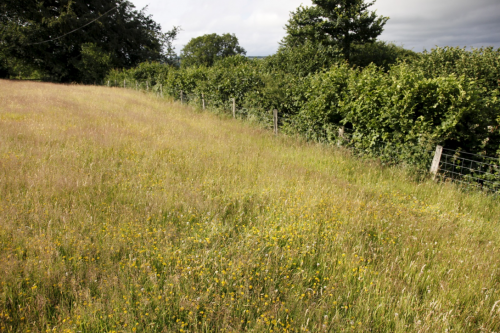
One morning, whilst wandering around the bottom meadow admiring the changes there was a sudden burst of sunshine and I found myself surrounded by a fluttering wave of Meadow Brown butterflies
2017 was our first year and suddenly the bottom meadow began to reveal its secrets. The odd Bluebell sprang up right in the middle of the field; Dog Violets appeared in the damper bottom corner, Ground Ivy under the shadow of the trees, and later Sheep Sorrel, Pig Nut, Bird’s Foot Trefoil and clump after clump of Yellow Rattle. But it wasn’t just the flowers. One morning, whilst wandering around the bottom meadow admiring the changes there was a sudden burst of sunshine and I found myself surrounded by a fluttering wave of Meadow Brown butterflies. Common they may be but this was new to Cross Park. Needless to say I was delighted.
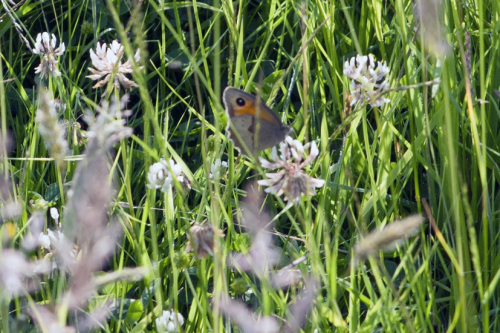
I listened carefully to all the arguments on how to manage this new found paradise. In the end I decided to take heed of a neighbour whose wildflower meadow was well established. We cut the top meadow for hay but let the bottom meadow go to seed. In December I invited the farmer’s sheep in to graze it off and we kept them in there for the whole month. When I look at the two meadows today there is little difference in appearance, except that the bottom meadow could be said to look a little rougher. I await the onset of spring, full of hope!
Other "Me and my Meadow" stories
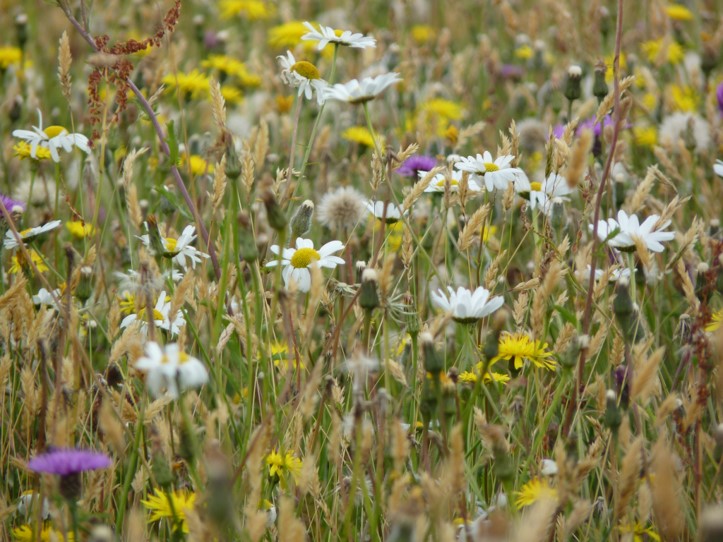
Julian Pady and Alison Andrews
Goren Farm, Honiton
Goren Farm has been in the family since 1955 and was farmed as an extensive dairy farm up until 1990. Since then the fields have been set to hay meadows to develop a natural balance with nature
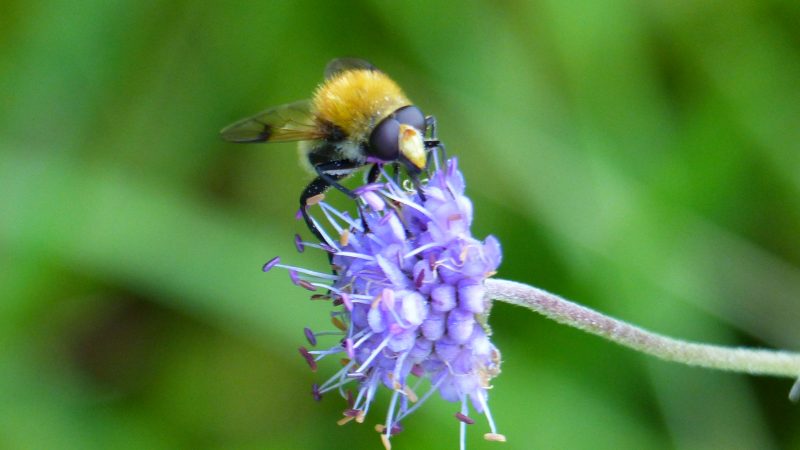
Amanda and Steve’s meadow
Wapsworthy, Dartmoor
A variety of land management over five acres, including the rewarding restoration of species-rich meadows using grazing only
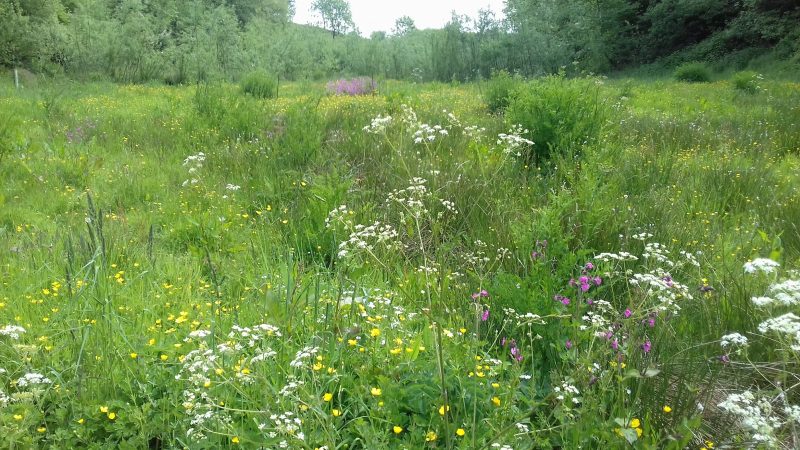
Robin and Veronica Aaronson
Ideford
A labour of love: The restoration of a previously unmanaged flood plain meadow.
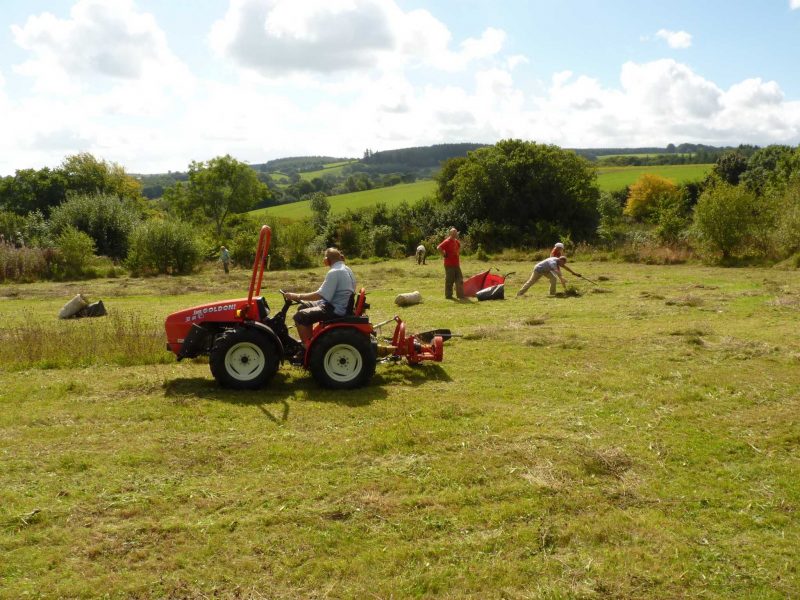
Bridford Trust Hay Meadow
Bridford, Teign Valley, Devon
An area of mixed woodland and grassy open spaces for community use, converted from farmland into a village green, but also including a hay meadow.
